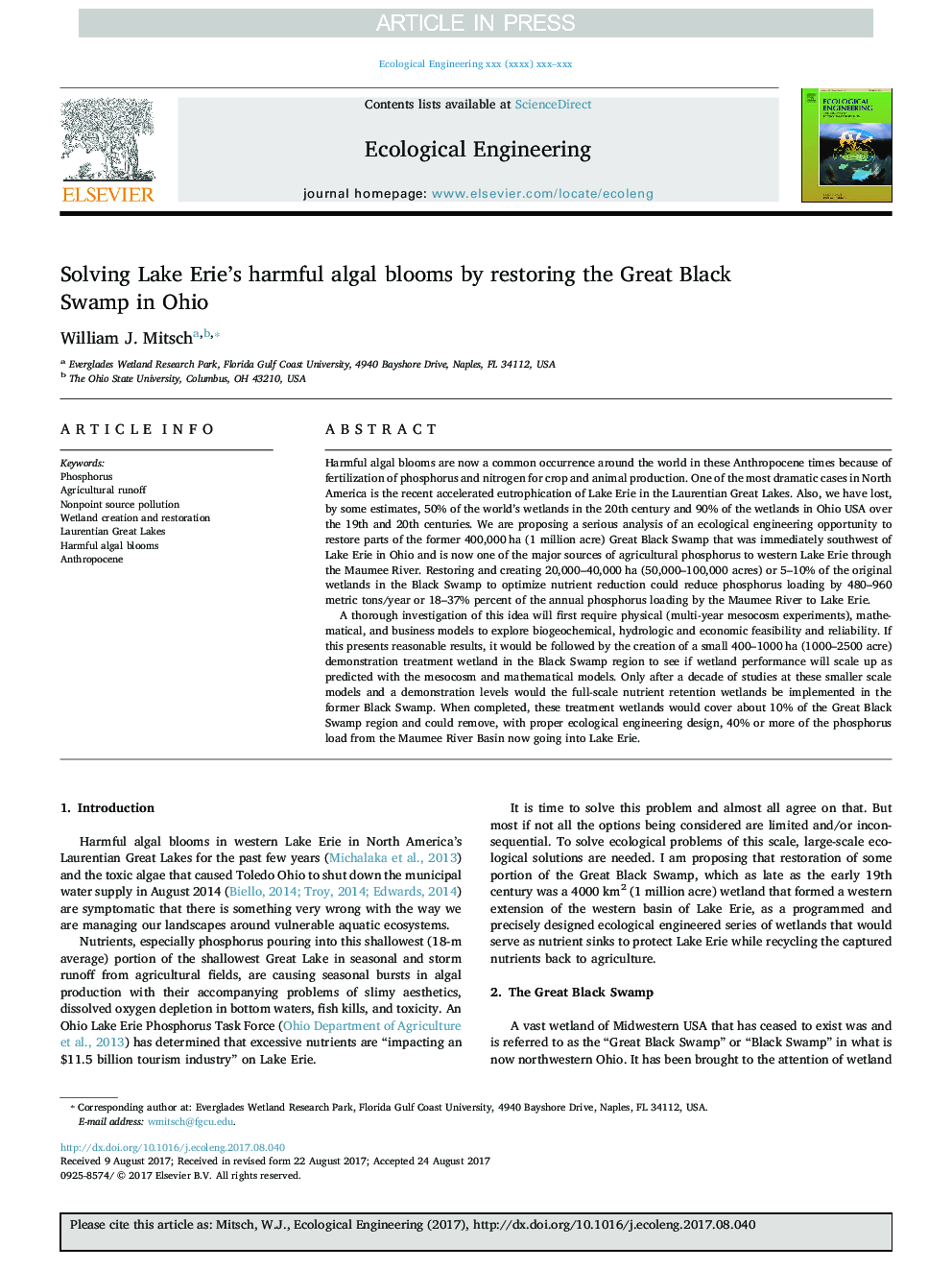| Article ID | Journal | Published Year | Pages | File Type |
|---|---|---|---|---|
| 8848176 | Ecological Engineering | 2017 | 8 Pages |
Abstract
A thorough investigation of this idea will first require physical (multi-year mesocosm experiments), mathematical, and business models to explore biogeochemical, hydrologic and economic feasibility and reliability. If this presents reasonable results, it would be followed by the creation of a small 400-1000Â ha (1000-2500 acre) demonstration treatment wetland in the Black Swamp region to see if wetland performance will scale up as predicted with the mesocosm and mathematical models. Only after a decade of studies at these smaller scale models and a demonstration levels would the full-scale nutrient retention wetlands be implemented in the former Black Swamp. When completed, these treatment wetlands would cover about 10% of the Great Black Swamp region and could remove, with proper ecological engineering design, 40% or more of the phosphorus load from the Maumee River Basin now going into Lake Erie.
Keywords
Related Topics
Life Sciences
Agricultural and Biological Sciences
Ecology, Evolution, Behavior and Systematics
Authors
William J. Mitsch,
